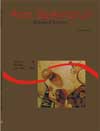Growth and metabolic parameters of red tilapia reared in floating net cages in a small reservoir
Abstract
The objective of this study was to provide information on growth and metabolic parameters of red tilapia reared in cages in a small reservoir. Twelve floating net cages (5 m3) placed in an 1-ha reservoir were stocked with 25, 50, 75 and 100 sex-reversed red tilapias/m3, fed with two commercial floating feeds (32 and 28% crude protein), during 213 days. No effect (P > 0.05) of stocking density was observed at the end of the experimental period on body weight, body length, condition factor, feed conversion rate, survival rate, mean daily weight gain and specific growth rate. No differences (P > 0.05) on liver glycogen, liver somatic index (LSI), and total liver lipid were verified among the tested densities. However, blood glucose decreased slightly (P > 0.05) from the onset of the experiment to the 64th day, and then returned to initial values from the day 118 on. Liver glycogen showed the highest value (P < 0.05) at the 64th day, and total liver lipid, at the end of the experimental period (P < 0.001) Otherwise, K showed higher values (P < 0.05) at the 28th, 64th, and 213th days. Dissolved oxygen and water transparency decreased along the experimental period. The poor growth, FCR, and the changes on metabolic parameters observed in this experiment might have been caused by environmental stimuli, such as poor water quality, despite the different densities tested in the studyDownloads
Download data is not yet available.
Published
2008-05-09
How to Cite
Carneiro, P. C. F., Urbinati, E. C., & Roviero, D. P. (2008). Growth and metabolic parameters of red tilapia reared in floating net cages in a small reservoir. Acta Scientiarum. Biological Sciences, 22, 439-444. https://doi.org/10.4025/actascibiolsci.v22i0.2962
Issue
Section
Biology Sciences
DECLARATION OF ORIGINALITY AND COPYRIGHTS
I Declare that current article is original and has not been submitted for publication, in part or in whole, to any other national or international journal.
The copyrights belong exclusively to the authors. Published content is licensed under Creative Commons Attribution 4.0 (CC BY 4.0) guidelines, which allows sharing (copy and distribution of the material in any medium or format) and adaptation (remix, transform, and build upon the material) for any purpose, even commercially, under the terms of attribution.
Read this link for further information on how to use CC BY 4.0 properly.
0.6
2019CiteScore
31st percentile
Powered by 

0.6
2019CiteScore
31st percentile
Powered by 











1.png)




3.png)













